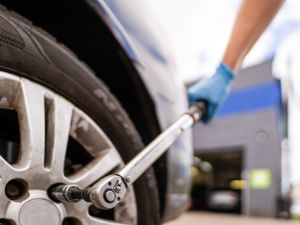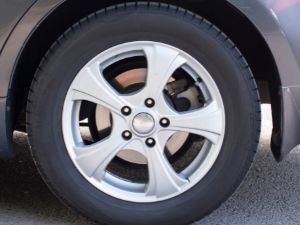The Importance of Tyre Maintenance
Tyre maintenance is an important responsibility when you own a car. Not only does it save you money, increase your control and improve breaking power but it also leads to safer driving.
Tyre Pressure
Tyre pressure should be treated as an important safety element of your car’s tyre maintenance. It is vital that your car has the correct tyre pressure as it is required to carry the weight of your car and its load. There’s no excuse for not having the correct tyre pressure as you can easily top it up at nearly every service station in Ireland for free.
Low Tyre Pressure:
Low tyre pressure increases the breaking distance on wet roads and decreases handling power. You also end up spending more, as the having low pressure means that your tyres wear much faster.
High Tyre Pressure:
By having your tyre pressure too high, it means that the amount of your tyre that touches the road is reduced. This results in the car having reduced grip. It also means your journey is going to be that little bit bumpier as an over inflated tyre, has less of a bump absorption rate. But the most dangerous factor of having over inflated tyres is that the risk of having a blowout increases. If you’re travelling at speed and have a tyre blowout, the results may be very serious. You should check your tyre pressure regularly and before any long journey. The correct air pressure for cars can vary. To find out the correct pressure, check the car’s owner manual or the side of the tyre.
Tyre Alignment
Tyre alignment involves putting your car wheels at perpendicular angles to the ground and parallel to each other. By having your tyres properly aligned, you can increase tyre life and keep your car straighter on the road. It isn’t actually your tyres that are adjusted when fixing tyre alignment but the vehicle’s suspension. By adjusting the suspension, it affects how the tyres make contact with the road.
How do you know if your types are misaligned?
- Uneven tyre wear – usually the sides of the tyre thread are much more worn than the centre of the tyre.
- Your car’s steering wheel is off centre when driving straight
- The steering wheel vibrates as you’re driving
- Your car veers to one side
If this is the case, you should get them fixed as soon as possible as it increases fuel efficiency, give your tyres a longer life, and improves your control of the car.
Tyre Balancing
Wheel balancing refers to the distribution of weight in a car tyre or wheel. Car owners usually get their tyres balanced at the same time as wheel alignment. Your car’s tyre balancing is measured by placing your tyre on a balancing machine. The tyre is then spun at a high speed to measure any imbalances. It also informs the mechanic of how much weight is required to balance out the tyre and where the extra weight needs to be positioned. The wheels are then balanced by placing a weight on the opposite site to where a heavy spot it located.
How Do your know if your tyres need to be balanced?
If you steering wheel vibrates when you’re driving, this indicates that the balance may be off centre. It usually occurs when you’re driving at high speed or on the motorway. You may also feel vibrations in the back of the car, the floor or in your seat. You can also check for balancing issued by looking at your tyres. If your tyres are cracked at the side or there are bulges it is another indication that your tyres need to be balanced.
Interested in reducing the cost of running your car? Check out our blog on improving you car’s fuel efficiency.



